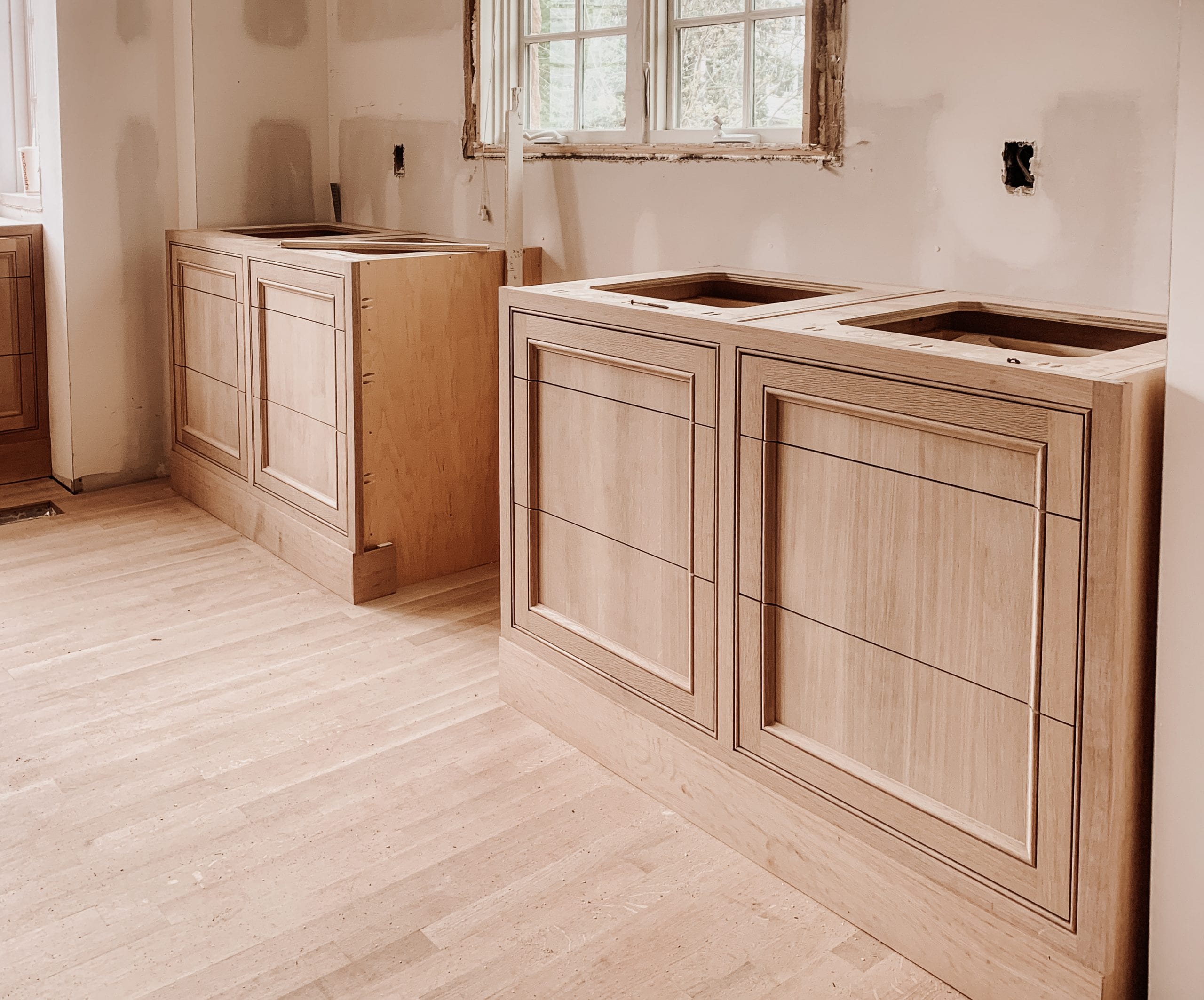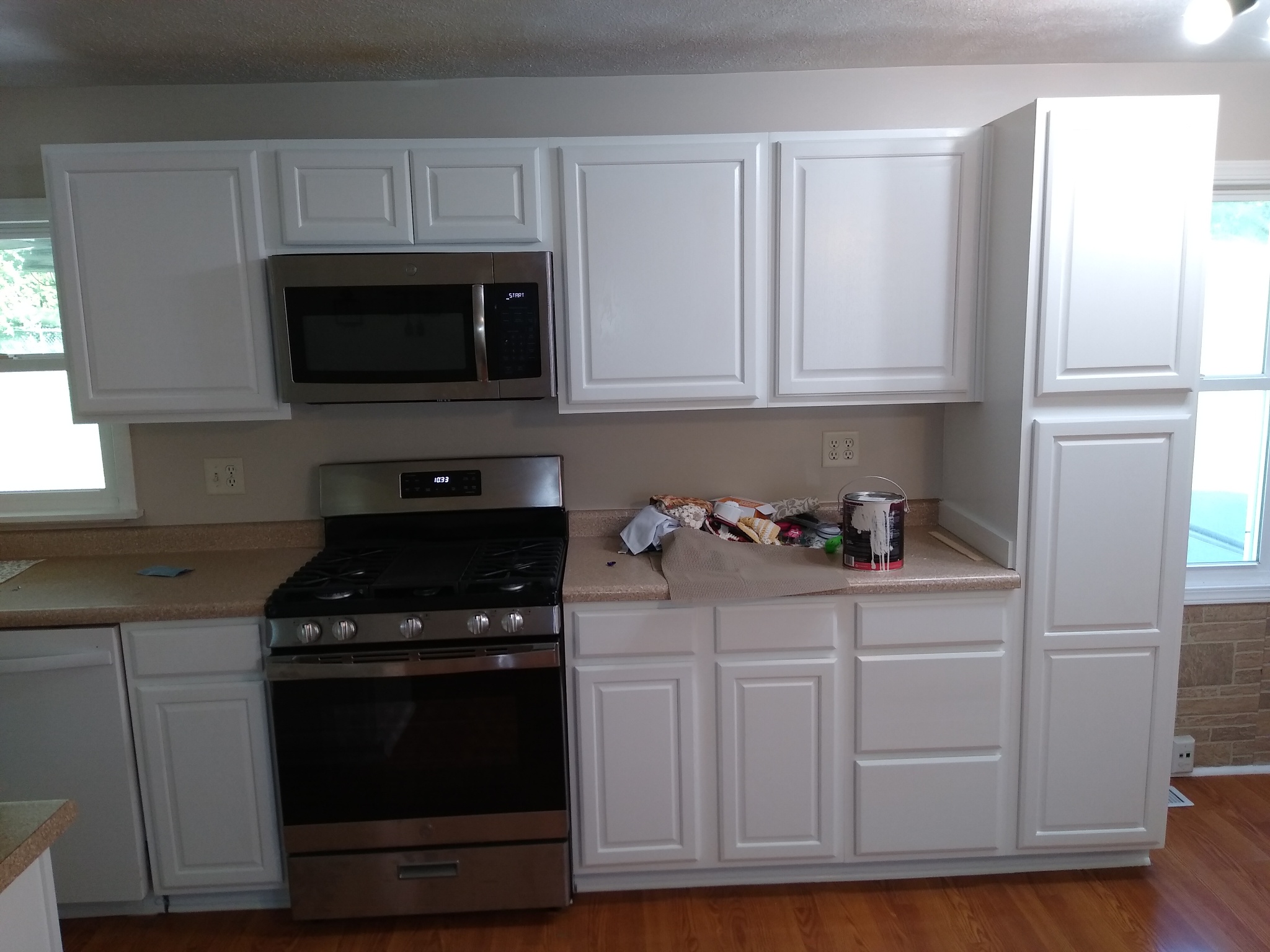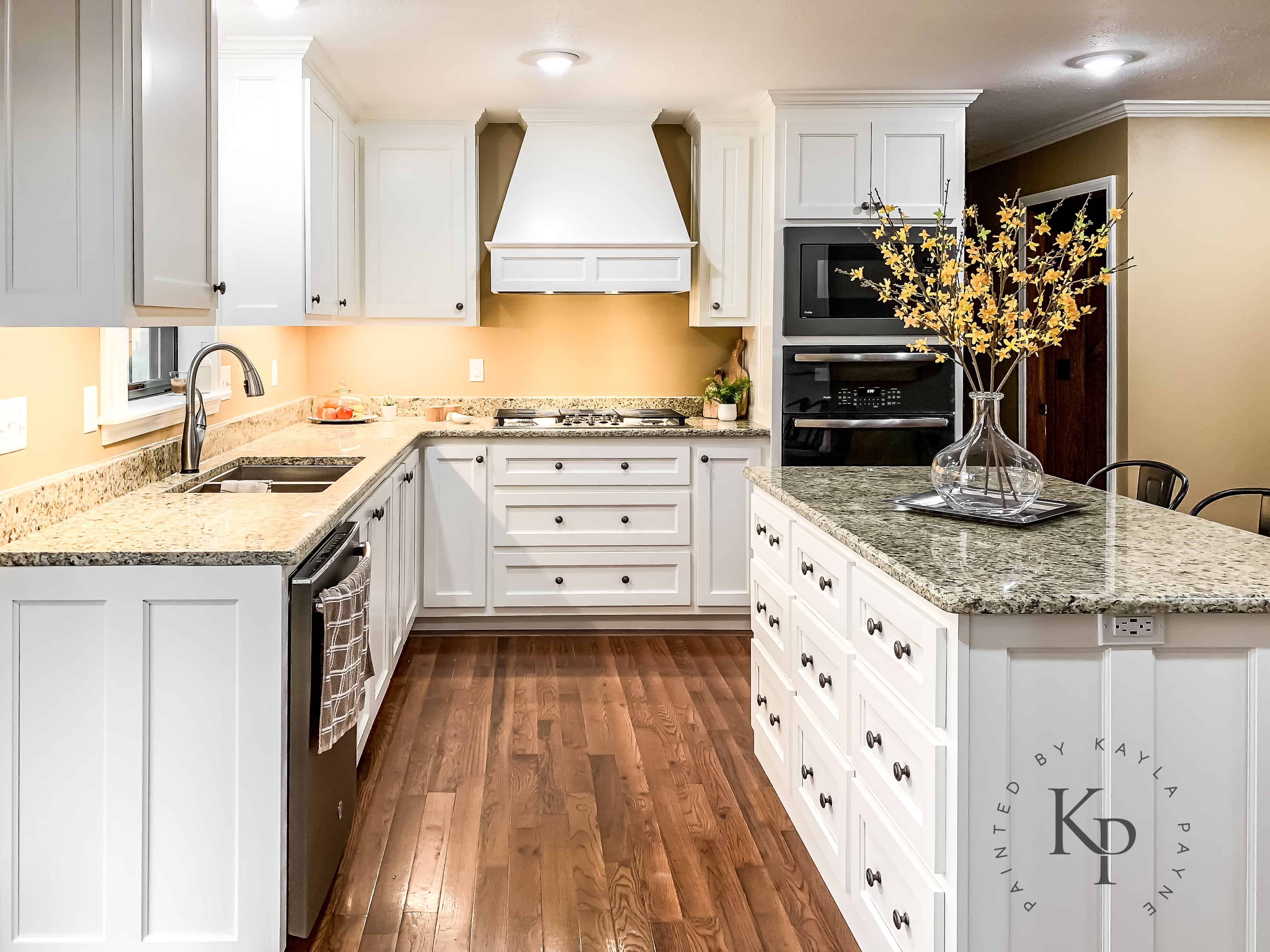Types of Top Coats for White Cabinets

Choosing the right top coat for your white cabinets is crucial for achieving a durable, long-lasting, and aesthetically pleasing finish. Different types of top coats offer varying levels of protection, durability, and aesthetic qualities. Understanding the advantages and disadvantages of each type can help you make an informed decision based on your specific needs and preferences.
Water-Based Top Coats
Water-based top coats are a popular choice for white cabinets due to their ease of use, low odor, and quick drying time. They are typically formulated with acrylic resins and water, making them a more environmentally friendly option compared to oil-based top coats.
Advantages of Water-Based Top Coats
- Easy Application: Water-based top coats are generally easier to apply than oil-based top coats, as they tend to be thinner and less viscous. This makes them suitable for both brush and spray applications.
- Low Odor: Water-based top coats have a significantly lower odor compared to oil-based top coats, making them a more pleasant option for indoor applications.
- Quick Drying Time: Water-based top coats dry much faster than oil-based top coats, typically within a few hours. This allows for faster project completion and less downtime.
- Environmentally Friendly: Water-based top coats are generally considered more environmentally friendly than oil-based top coats, as they contain fewer volatile organic compounds (VOCs).
Disadvantages of Water-Based Top Coats
- Lower Durability: Water-based top coats generally offer lower durability compared to oil-based top coats, making them less suitable for high-traffic areas or applications that require frequent cleaning.
- Susceptibility to Moisture: Water-based top coats can be more susceptible to moisture damage, particularly in humid environments. This can lead to cracking, peeling, or warping of the finish.
- Less Resistant to Staining: Water-based top coats are less resistant to staining than oil-based top coats. This can be a concern for areas prone to spills or accidental marks.
Examples of Water-Based Top Coat Brands
- Sherwin-Williams Emerald Urethane Trim Enamel: This water-based top coat offers excellent durability, scratch resistance, and a smooth, satin finish. It is suitable for both interior and exterior applications.
- Benjamin Moore Advance: This water-based top coat is known for its excellent coverage, durability, and self-priming capabilities. It provides a smooth, durable finish that is resistant to stains and scratches.
Oil-Based Top Coats
Oil-based top coats are traditionally known for their durability, resistance to moisture and stains, and high gloss finish. They are formulated with alkyd resins and oil, which provide a tough, protective barrier for the underlying surface.
Advantages of Oil-Based Top Coats
- High Durability: Oil-based top coats offer superior durability compared to water-based top coats, making them ideal for high-traffic areas or applications that require frequent cleaning.
- Excellent Moisture Resistance: Oil-based top coats are highly resistant to moisture, making them suitable for humid environments or applications where the cabinets may be exposed to water.
- Strong Stain Resistance: Oil-based top coats provide excellent stain resistance, making them ideal for areas prone to spills or accidental marks.
- High Gloss Finish: Oil-based top coats typically produce a high gloss finish, which can enhance the appearance of white cabinets and create a more polished look.
Disadvantages of Oil-Based Top Coats
- Longer Drying Time: Oil-based top coats take significantly longer to dry compared to water-based top coats, typically requiring 24 hours or more for complete drying.
- Strong Odor: Oil-based top coats have a strong, pungent odor that can linger for several days after application. This can be a concern for indoor applications.
- Cleanup: Oil-based top coats require mineral spirits or paint thinner for cleanup, which can be messy and require proper disposal.
- Less Environmentally Friendly: Oil-based top coats contain higher levels of VOCs compared to water-based top coats, making them less environmentally friendly.
Examples of Oil-Based Top Coat Brands
- PPG Diamond: This oil-based top coat is known for its exceptional durability, moisture resistance, and high gloss finish. It is suitable for both interior and exterior applications.
- Minwax Polycrylic: This oil-based top coat is a popular choice for furniture and cabinets, offering excellent durability, moisture resistance, and a clear, protective finish.
Acrylic Top Coats
Acrylic top coats are a versatile option for white cabinets, offering a balance of durability, ease of use, and environmental friendliness. They are formulated with acrylic resins, which provide a durable, protective finish that is resistant to scratches, stains, and moisture.
Advantages of Acrylic Top Coats
- Good Durability: Acrylic top coats offer good durability, making them suitable for both interior and exterior applications.
- Easy Application: Acrylic top coats are typically easy to apply, both by brush and spray.
- Fast Drying Time: Acrylic top coats dry relatively quickly, typically within a few hours.
- Environmentally Friendly: Acrylic top coats are generally considered more environmentally friendly than oil-based top coats, as they contain lower levels of VOCs.
Disadvantages of Acrylic Top Coats
- Lower Moisture Resistance: Acrylic top coats are generally less resistant to moisture compared to oil-based top coats, making them less suitable for humid environments or applications where the cabinets may be exposed to water.
- Less Stain Resistance: Acrylic top coats are less resistant to staining compared to oil-based top coats, making them less ideal for areas prone to spills or accidental marks.
Examples of Acrylic Top Coat Brands
- Rust-Oleum Cabinet Transformations: This acrylic top coat is specifically designed for cabinets, offering excellent durability, scratch resistance, and a smooth, satin finish. It is available in a variety of colors, including white.
- Valspar Cabinet Enamel: This acrylic top coat is known for its excellent coverage, durability, and self-priming capabilities. It provides a smooth, durable finish that is resistant to scratches and stains.
Factors to Consider When Choosing a Top Coat: Best Top Coat For White Cabinets

Selecting the right top coat for your white cabinets is crucial for achieving a durable, aesthetically pleasing finish. The top coat not only protects the cabinet surface from scratches, stains, and moisture but also influences the overall appearance and functionality. Several factors should be considered to ensure you choose the best top coat for your specific needs and preferences.
Durability
The durability of a top coat is a key factor to consider, especially for high-traffic areas like kitchens and bathrooms. Durability refers to the top coat’s resistance to scratches, abrasion, and impact. A durable top coat will withstand everyday use and maintain its appearance over time.
- High-gloss finishes are typically more durable than matte finishes due to their harder surface. They resist scratches and abrasions better, making them ideal for high-traffic areas.
- Epoxy and polyurethane top coats are known for their exceptional durability and resistance to moisture, making them suitable for kitchen cabinets that are exposed to spills and splashes.
- Acrylic top coats offer good durability and are easier to apply than epoxy or polyurethane. They are a good option for less demanding areas or for DIY projects.
Gloss Level, Best top coat for white cabinets
The gloss level of a top coat determines the amount of light reflected from the surface, influencing the overall appearance of the cabinets. Gloss levels range from flat or matte to high gloss, each offering a unique aesthetic.
- Matte finishes absorb more light, creating a soft, subtle appearance. They are ideal for hiding imperfections and creating a contemporary, minimalist look.
- Semi-gloss finishes reflect moderate light, offering a balance between durability and a subtle shine. They are a popular choice for kitchens and bathrooms, as they are easy to clean and maintain.
- High-gloss finishes reflect the most light, creating a shiny, reflective surface. They can enhance the appearance of cabinets, but they may also highlight imperfections and require more maintenance.
Ease of Application
The ease of application is a crucial factor, especially for DIY projects. Some top coats are easier to apply than others, requiring less skill and experience.
- Acrylic top coats are typically easier to apply than epoxy or polyurethane due to their thinner consistency and faster drying time. They are a good choice for beginners.
- Spray-on top coats offer quick and even application, but they require proper ventilation and protective gear.
- Brush-on top coats are a traditional option that allows for precise application, but they require more time and effort to achieve a smooth, even finish.
Drying Time
The drying time of a top coat refers to the amount of time it takes for the coating to harden and become fully cured. The drying time can vary depending on the type of top coat, the temperature, and the humidity.
- Acrylic top coats typically have a shorter drying time than epoxy or polyurethane, allowing for faster completion of projects.
- Epoxy and polyurethane top coats require longer drying times, but they offer superior durability and moisture resistance.
- The drying time of a top coat can significantly impact the overall project timeline, so it’s essential to choose a product that fits your schedule and needs.
Application Techniques and Tips

Applying a top coat to white cabinets is a crucial step in achieving a durable and beautiful finish. Proper preparation and application techniques are essential for achieving a smooth, even, and long-lasting result.
Surface Preparation
Proper surface preparation is crucial for a successful top coat application. This step ensures a smooth, even surface that allows the top coat to adhere properly.
- Clean the surface thoroughly: Remove any dust, dirt, grease, or grime using a mild detergent and a damp cloth. Allow the cabinets to dry completely before proceeding.
- Sand the surface lightly: Use fine-grit sandpaper (220-grit or higher) to smooth out any imperfections or rough spots. This helps create a uniform surface for the top coat to adhere to.
- Remove sanding dust: After sanding, wipe down the cabinets with a tack cloth to remove any dust particles that could interfere with the top coat.
Application Methods
There are various methods for applying a top coat to white cabinets, each with its own advantages and disadvantages.
- Brush application: This method is suitable for small areas and intricate details. Use a high-quality brush with soft bristles and apply thin, even coats.
- Roller application: Rollers are ideal for large areas, providing a smooth and even finish. Use a high-quality roller with a nap length appropriate for the type of top coat.
- Spray application: Spray application is the fastest method, especially for large areas. However, it requires more experience and equipment. Use a high-quality spray gun and a suitable paint thinner for the top coat.
Drying Time
The drying time for a top coat varies depending on the type of product, temperature, and humidity.
- Follow the manufacturer’s instructions: Each top coat has specific drying times, so it’s essential to refer to the product label for accurate information.
- Allow adequate drying time: Ensure that each coat is completely dry before applying the next. This prevents the coats from blending together and creating an uneven finish.
- Avoid touching the cabinets: Allow the top coat to cure completely before using the cabinets. This ensures that the finish is durable and resistant to scratches.
Tips for Achieving a Smooth and Even Finish
Here are some tips to achieve a smooth and even finish when applying a top coat to white cabinets.
- Use thin coats: Apply multiple thin coats instead of one thick coat. This allows the top coat to dry evenly and prevents brush strokes or drips.
- Avoid overloading the brush or roller: Too much paint can lead to drips and runs. Dip the brush or roller lightly into the paint and remove excess paint before application.
- Work in smooth, even strokes: Apply the top coat in long, smooth strokes, overlapping each stroke by about 50%.
- Use a damp cloth to wipe away drips: If any drips occur, wipe them away immediately with a damp cloth.
Avoiding Brush Strokes
Brush strokes can detract from the appearance of a finished cabinet.
- Use a high-quality brush: A brush with soft bristles and a good paint-holding capacity helps reduce brush strokes.
- Apply thin coats: As mentioned before, multiple thin coats are better than one thick coat, minimizing the appearance of brush strokes.
- Use a light touch: Apply the paint with a light hand, allowing the brush to glide smoothly over the surface.
Minimizing Drips
Drips can ruin the appearance of a finished cabinet.
- Use the correct paint consistency: If the paint is too thick, it will be more prone to dripping. Thin the paint according to the manufacturer’s instructions.
- Apply thin coats: As mentioned before, multiple thin coats help minimize drips.
- Work slowly and carefully: Avoid rushing the application process. Allow the paint to settle slightly before moving to the next section.
Creating Different Finishes
The type of top coat you choose determines the final finish of your cabinets.
- High-gloss finish: This finish provides a high sheen and is often used for traditional kitchens. It requires more maintenance to keep it clean and free from fingerprints.
- Semi-gloss finish: This finish offers a moderate sheen and is a popular choice for kitchens and bathrooms. It’s easier to clean than high-gloss and hides imperfections better.
- Matte finish: This finish provides a flat, non-reflective surface and is often used for modern kitchens. It hides imperfections well but requires more care to prevent staining.
Best top coat for white cabinets – Just as a crisp white coat elevates the elegance of a cabinet, so too does a touch of whimsical charm enhance the spirit of a space. Consider the enchanting simplicity of Anne Shirley’s bedroom, a haven of imagination and youthful spirit , and you’ll understand the power of a well-chosen aesthetic.
When selecting a top coat for your white cabinets, embrace the subtle nuances that bring a room to life, just as Anne’s beloved green gables brought color and vibrancy to her world.
Just as the best top coat for white cabinets enhances their brilliance and longevity, so too can the right organizational solution illuminate the hidden potential of your kitchen. A best lazy susan corner cabinet unveils the often-neglected space, turning it into a haven of accessibility.
This transformation, much like the gleam of a freshly coated cabinet, brings a sense of clarity and order, allowing you to see and access your treasures with ease. And just as the top coat protects your cabinets, the best lazy susan corner cabinet safeguards your belongings, keeping them safe and organized within the heart of your home.
